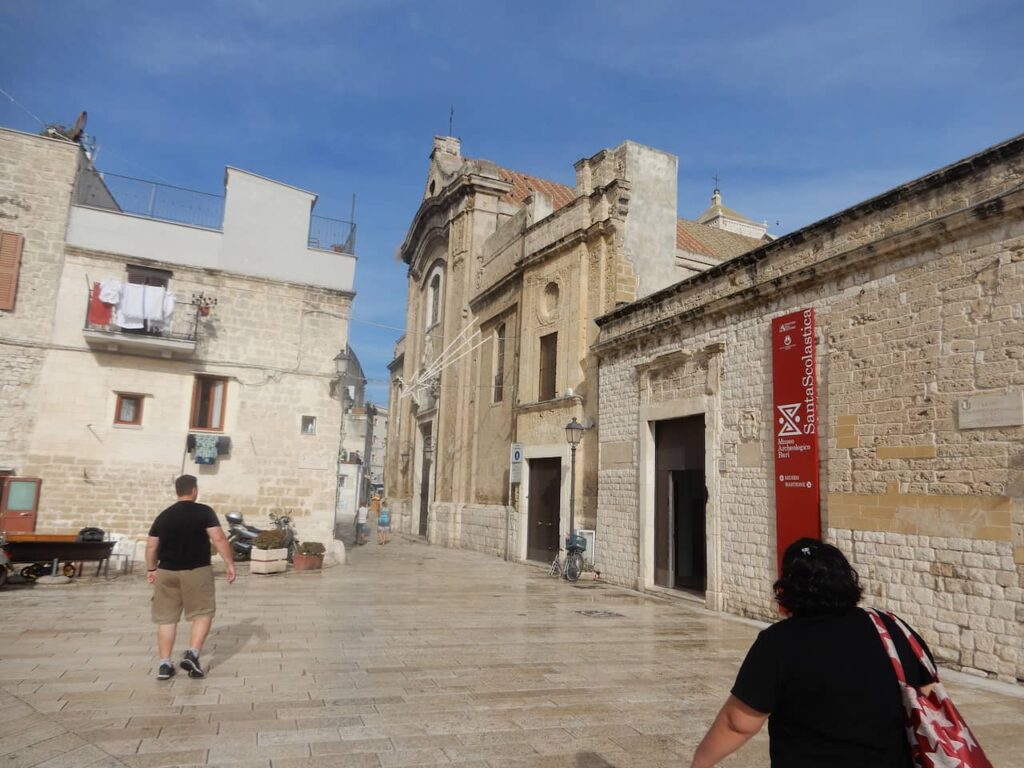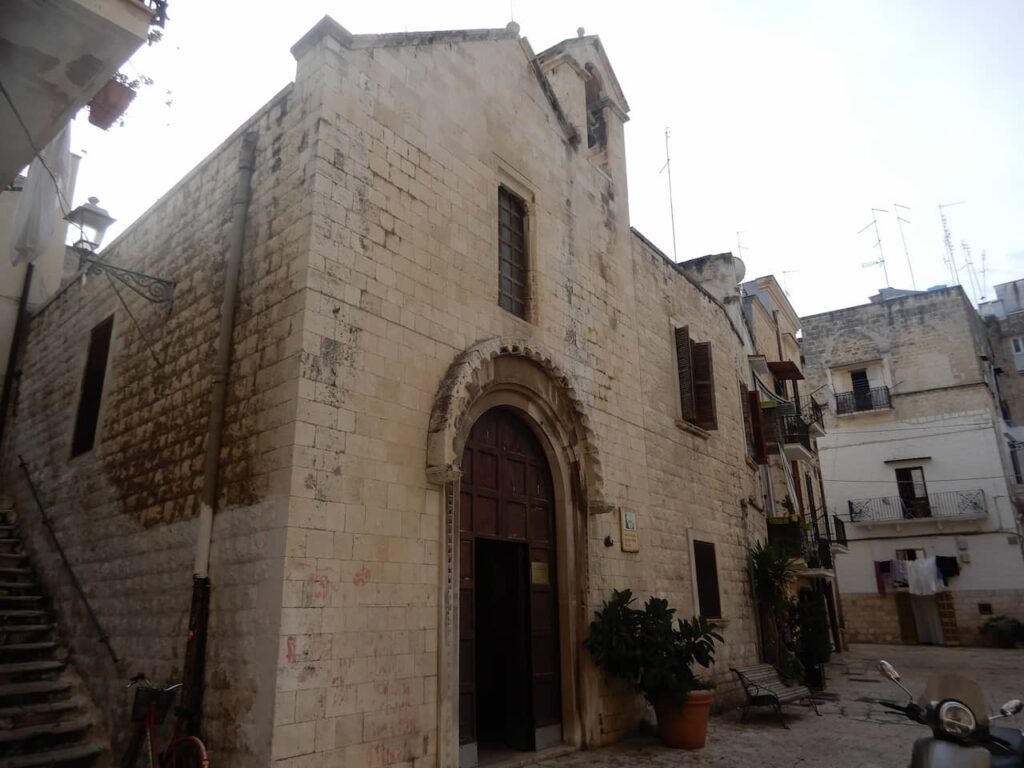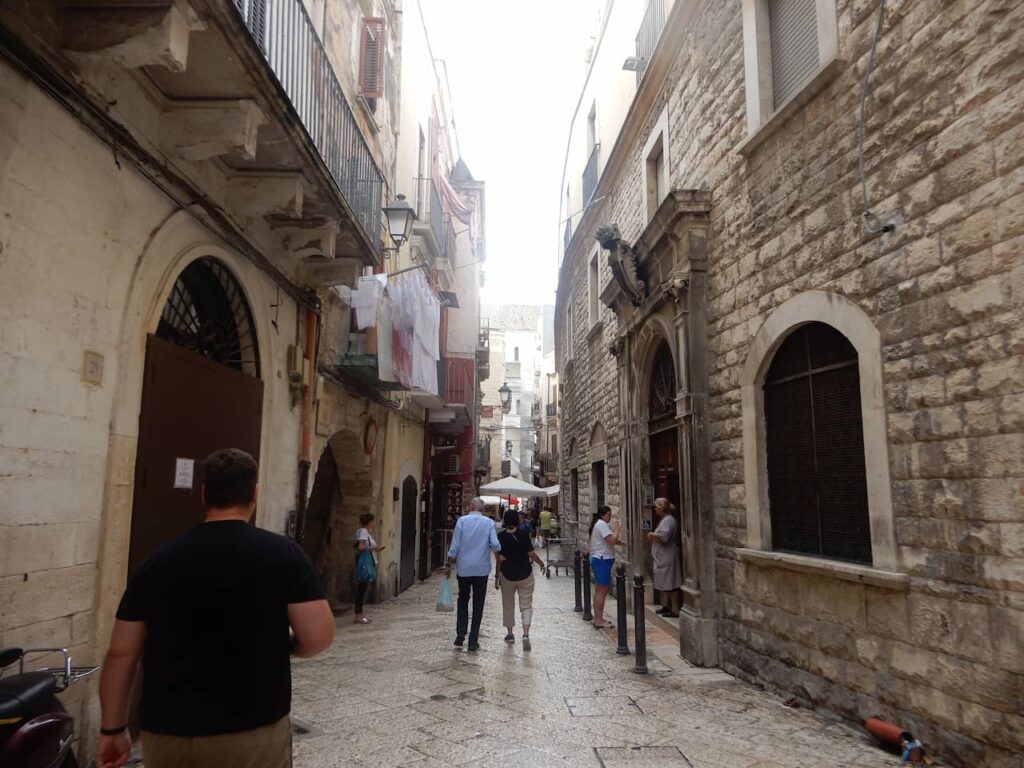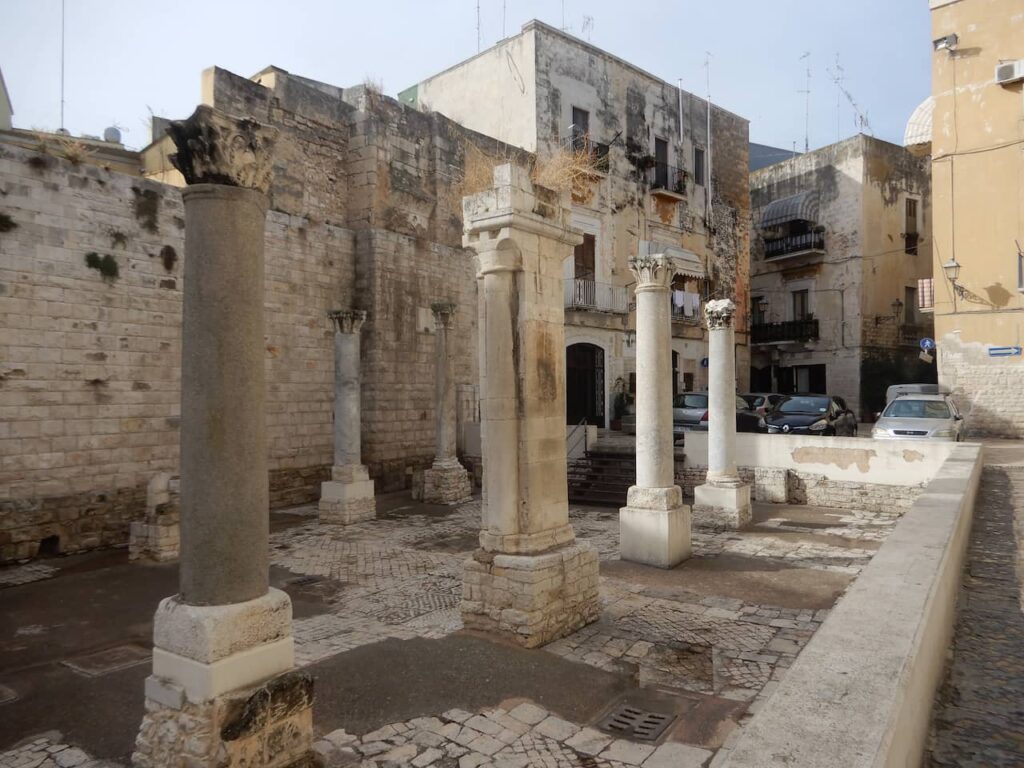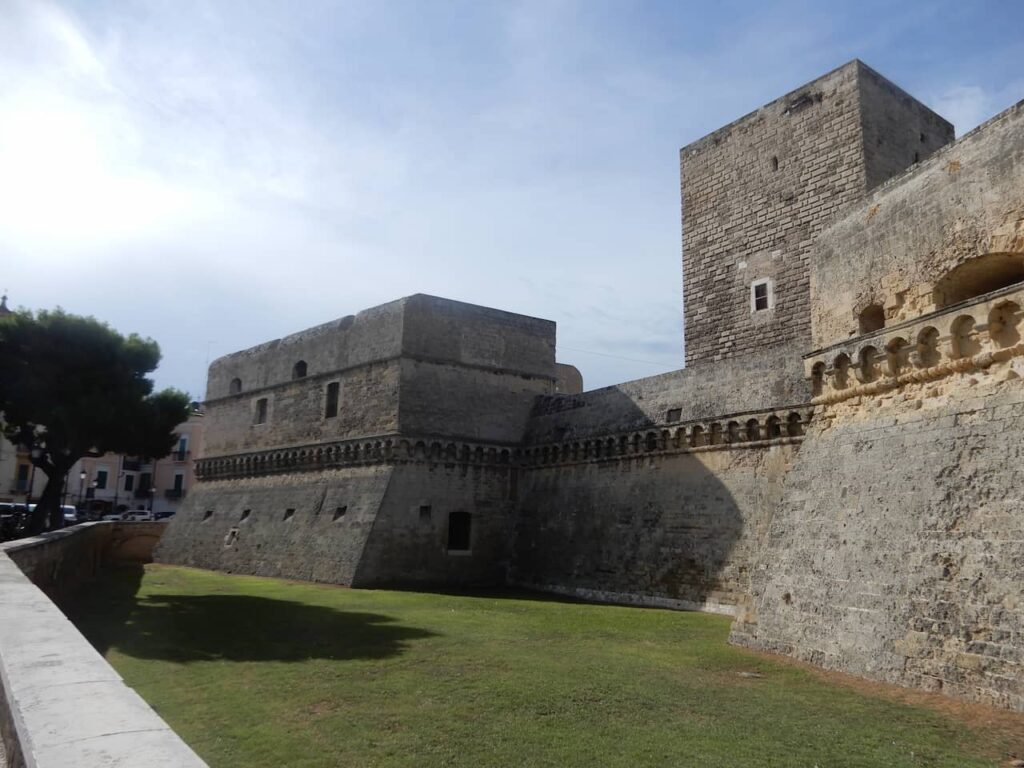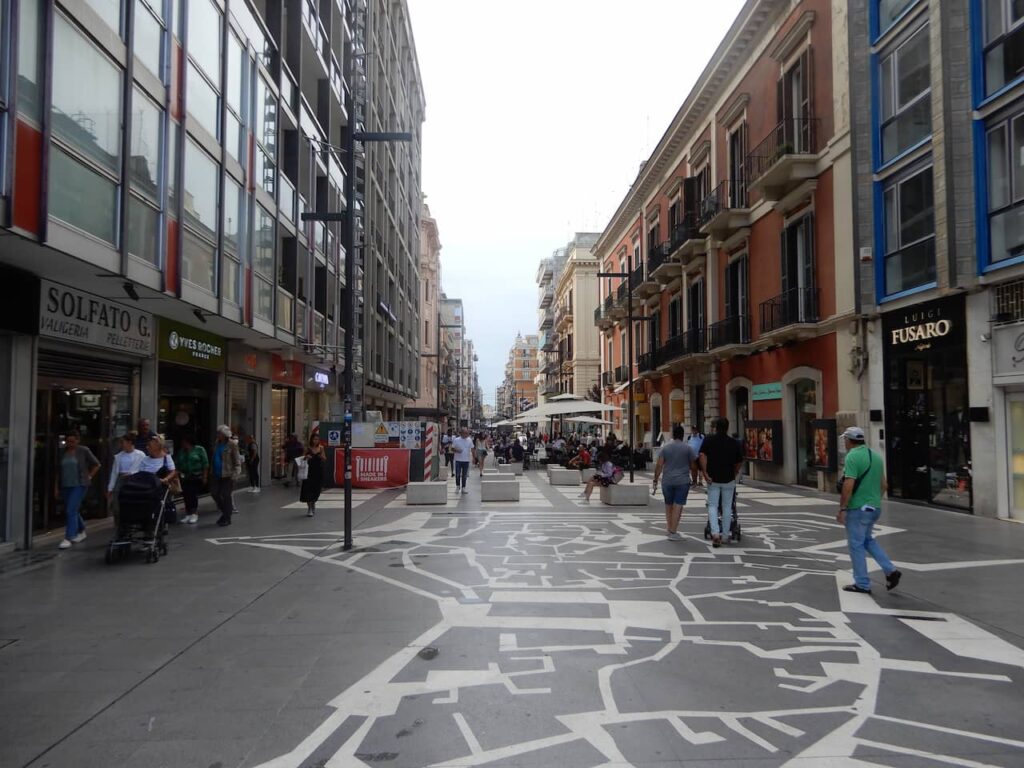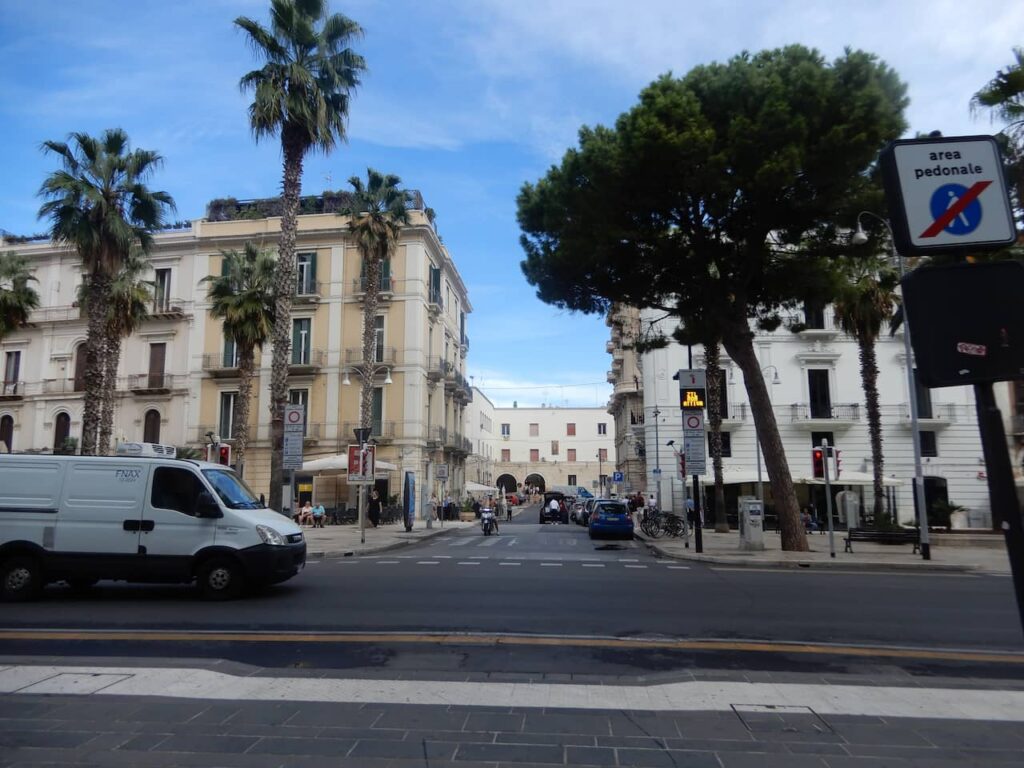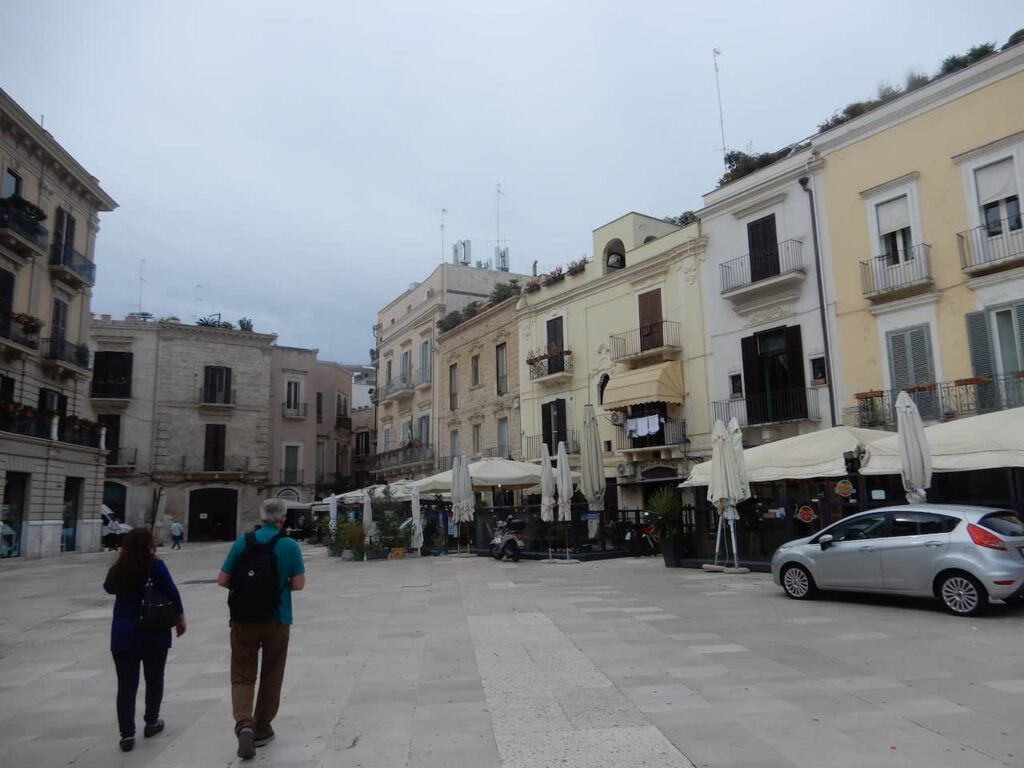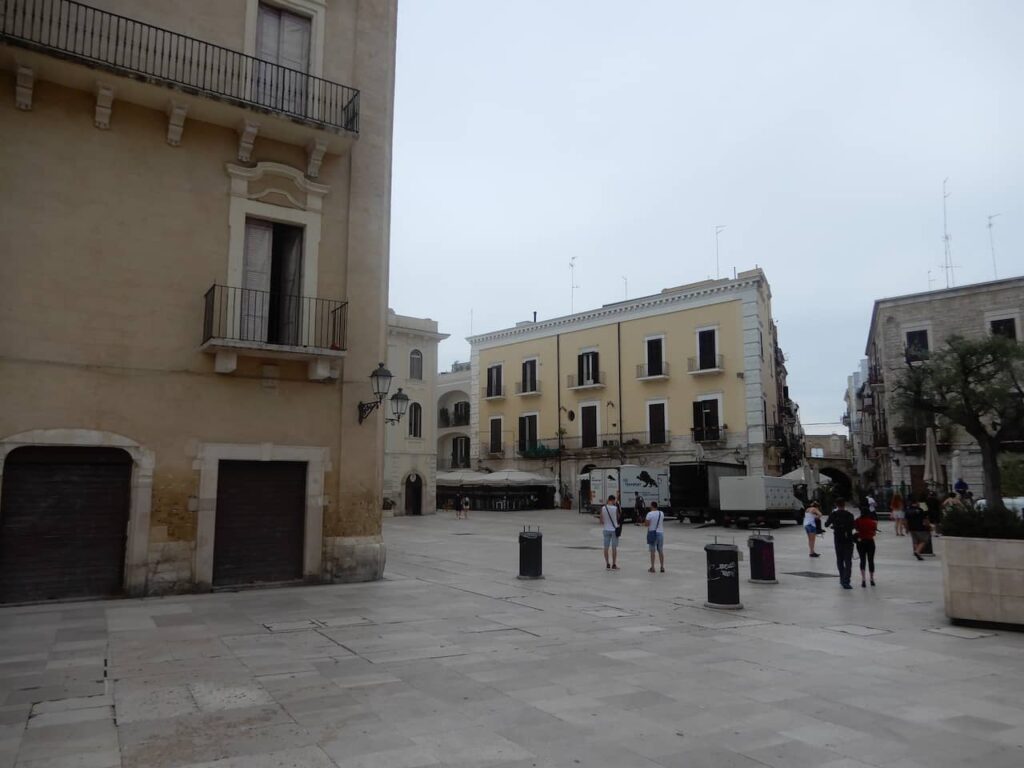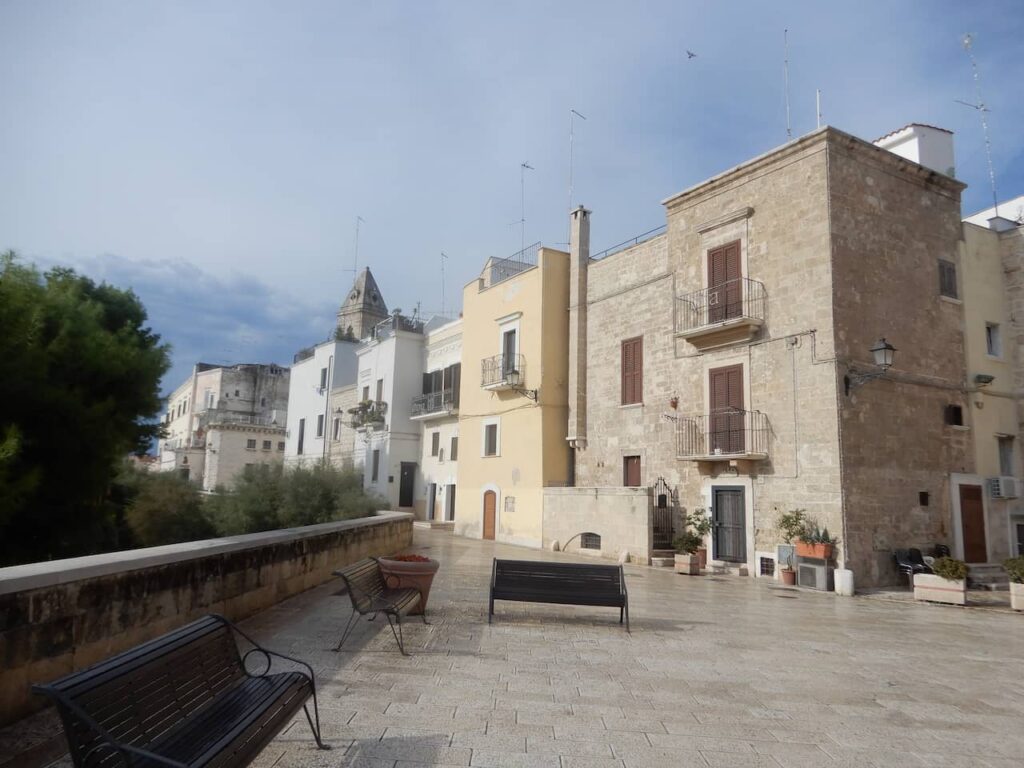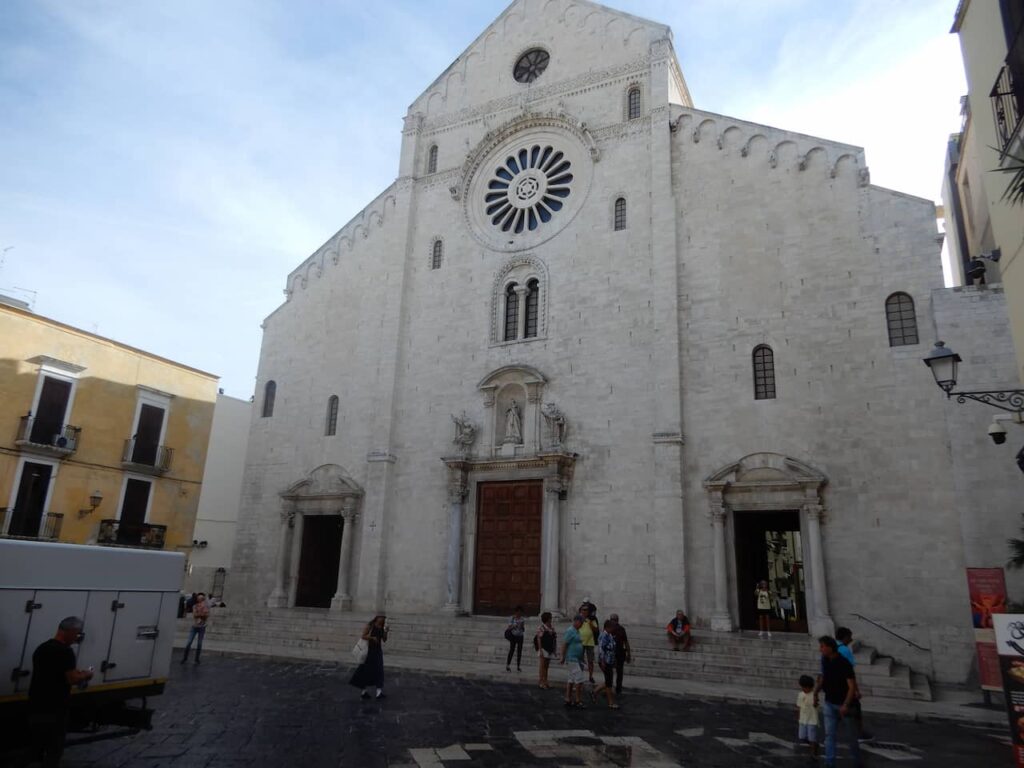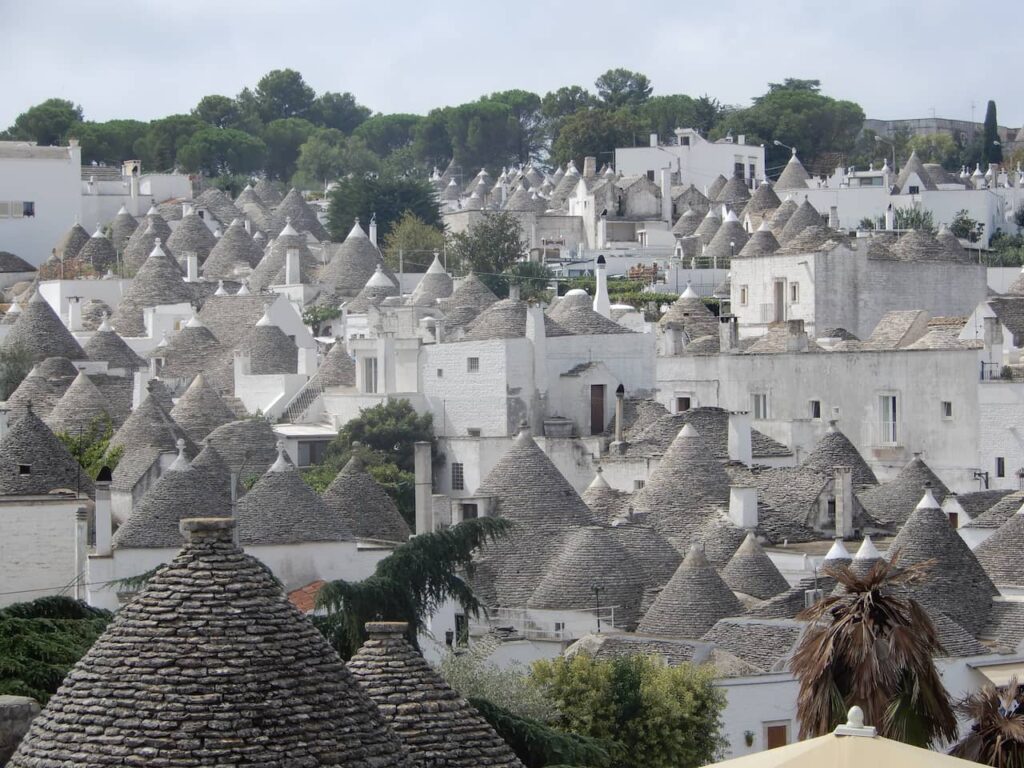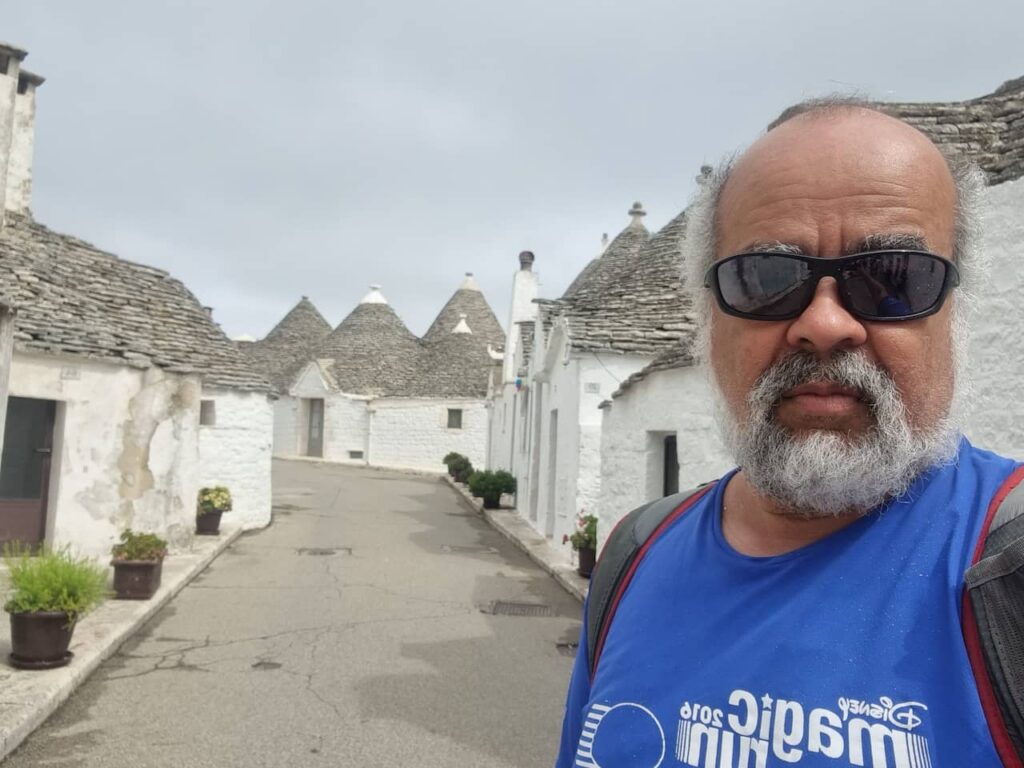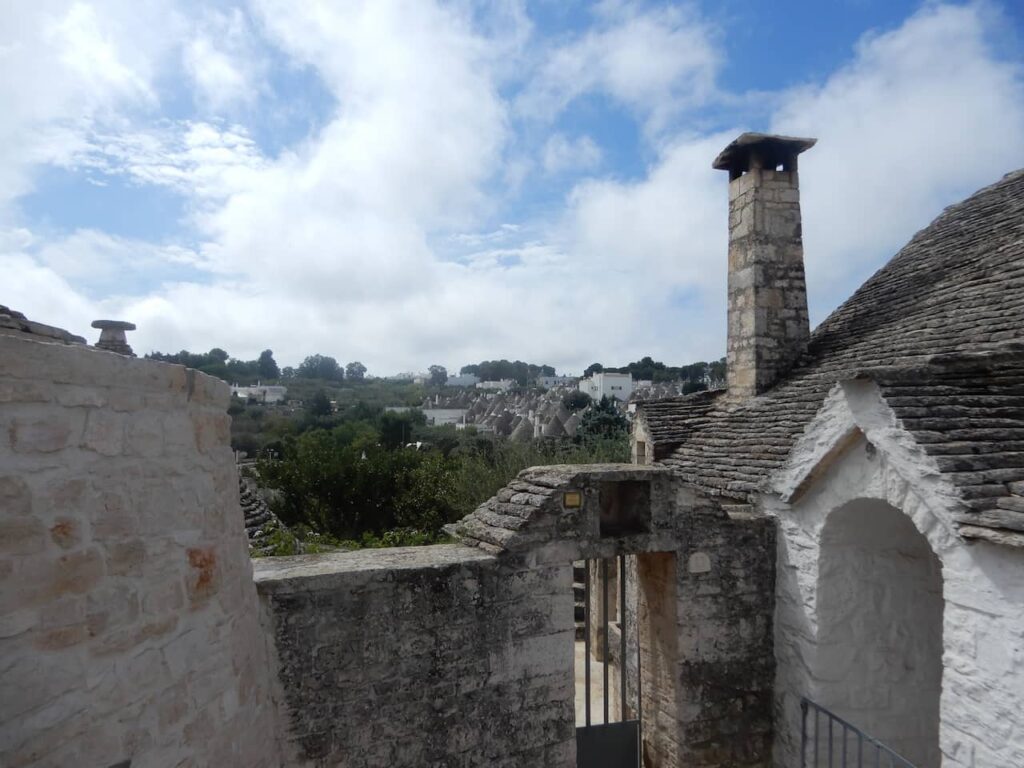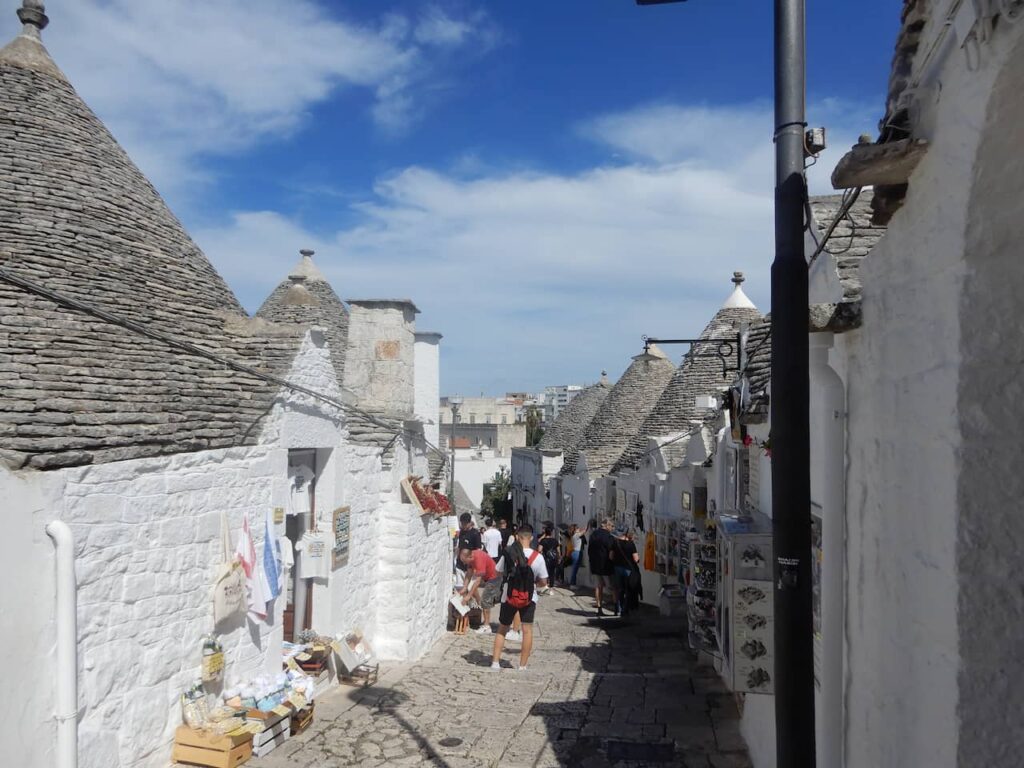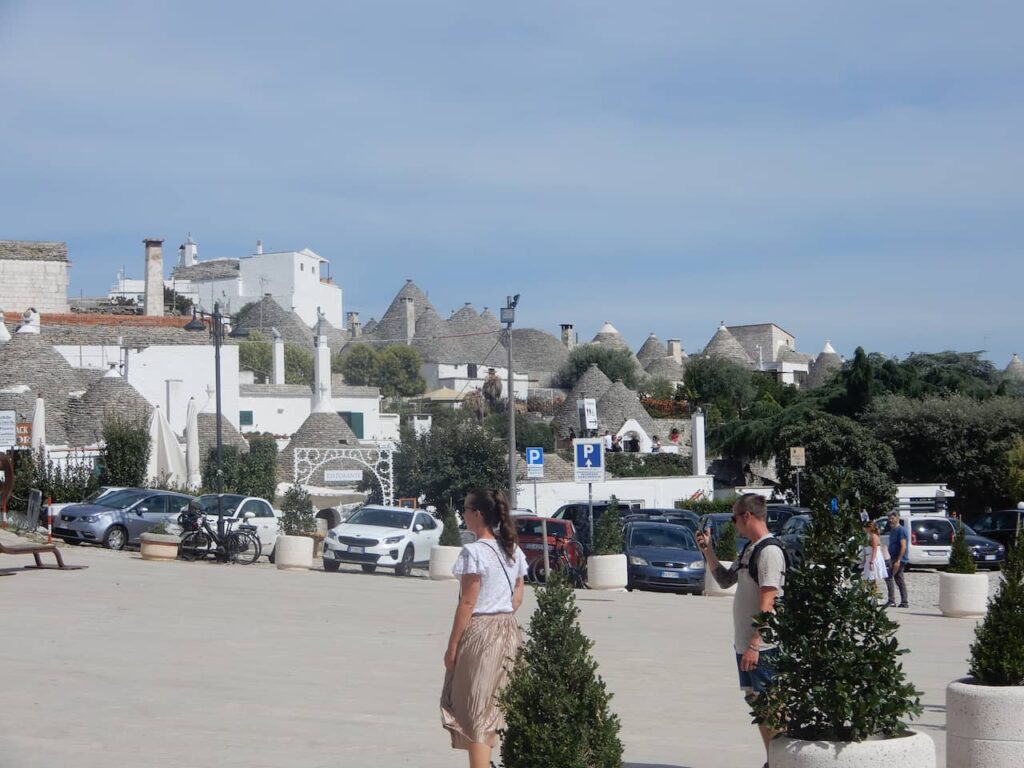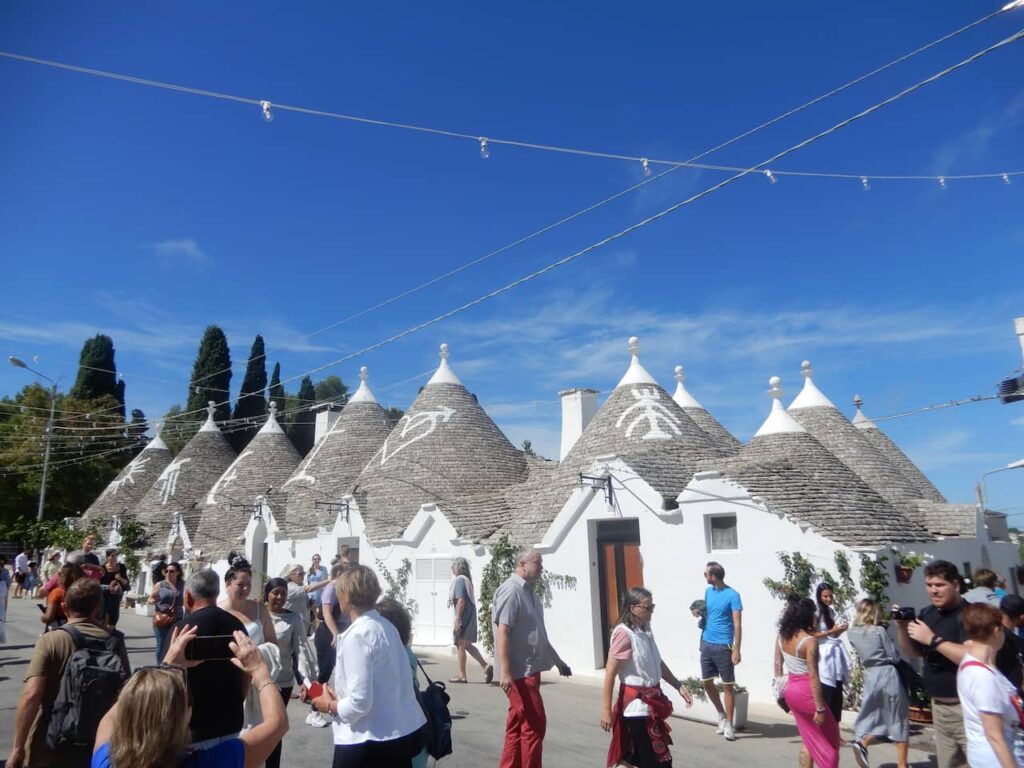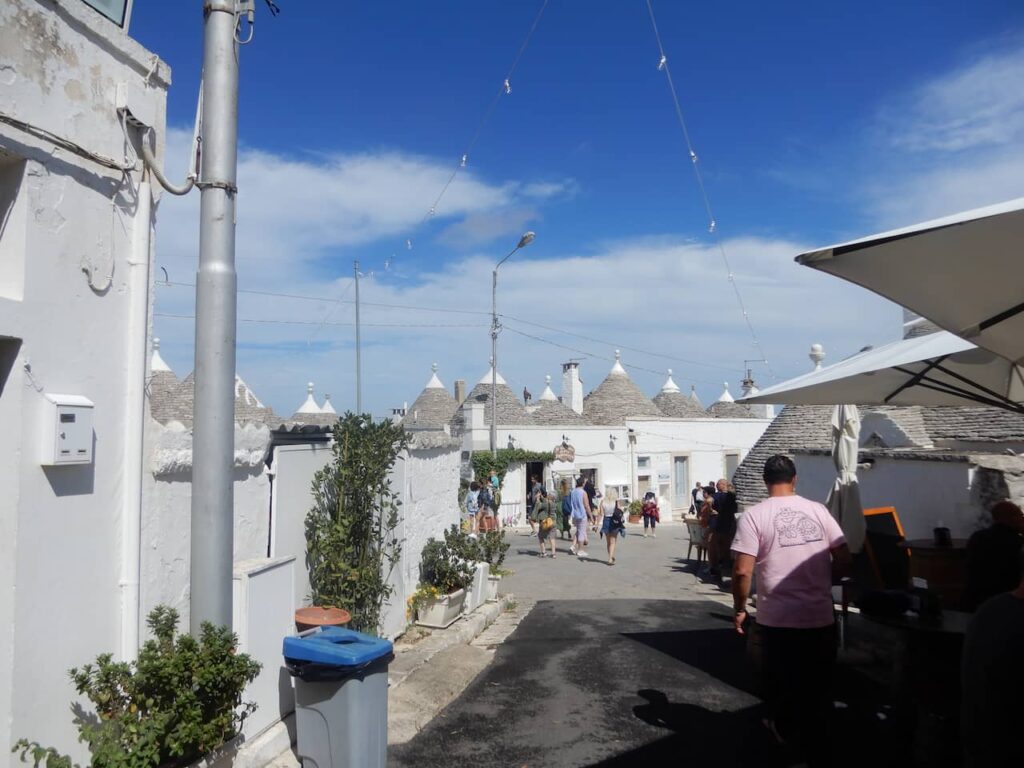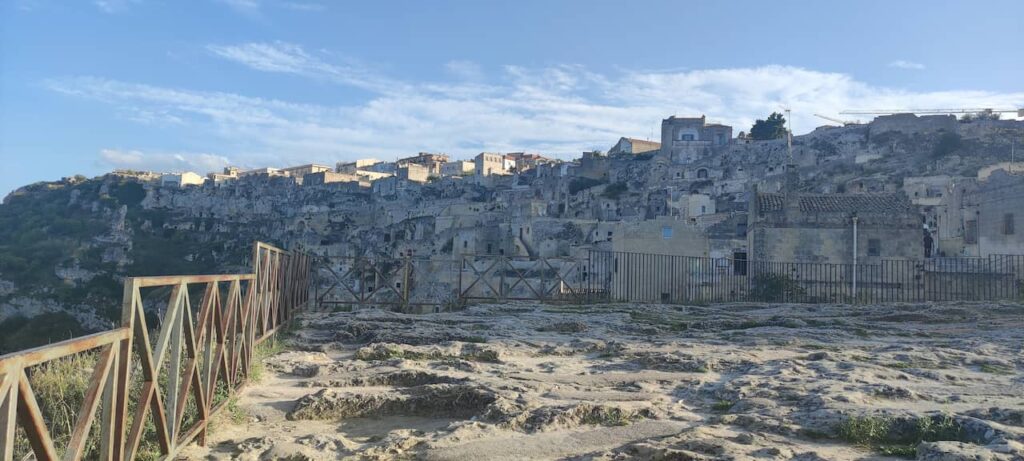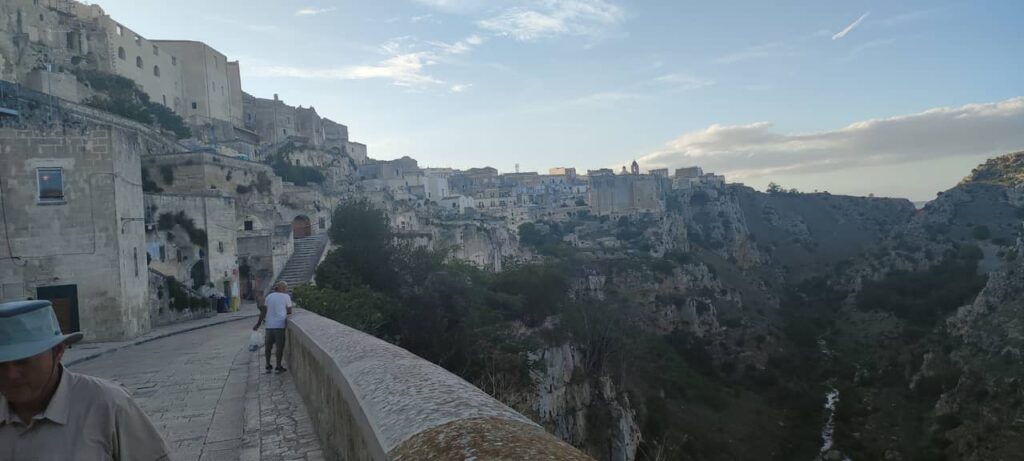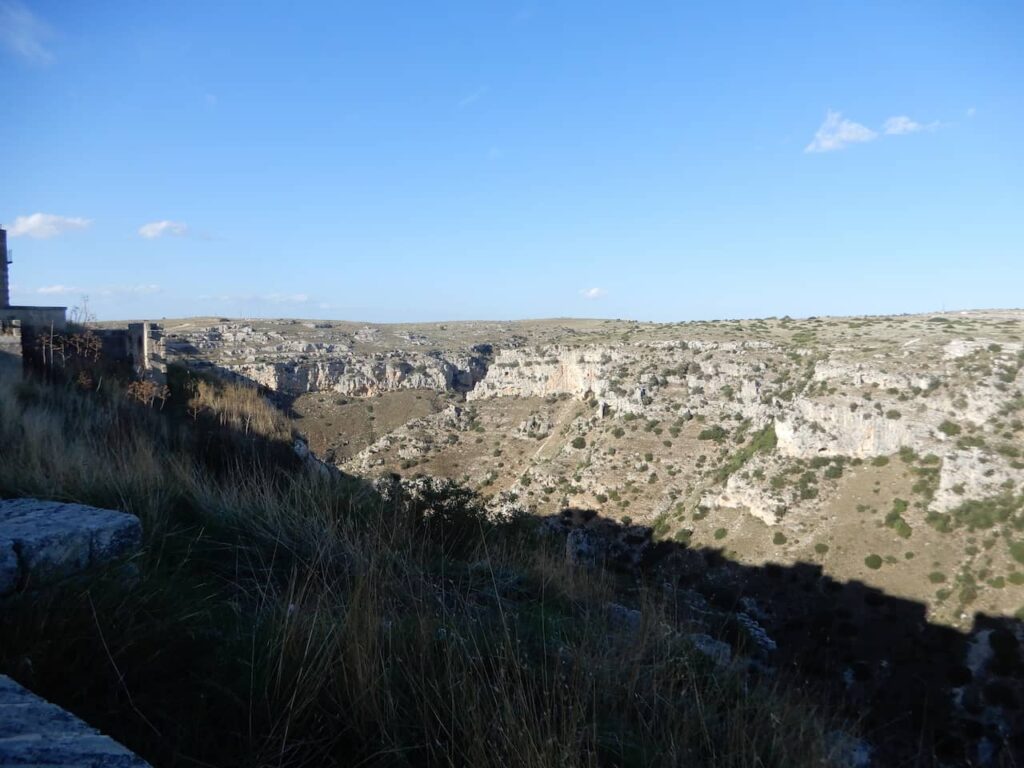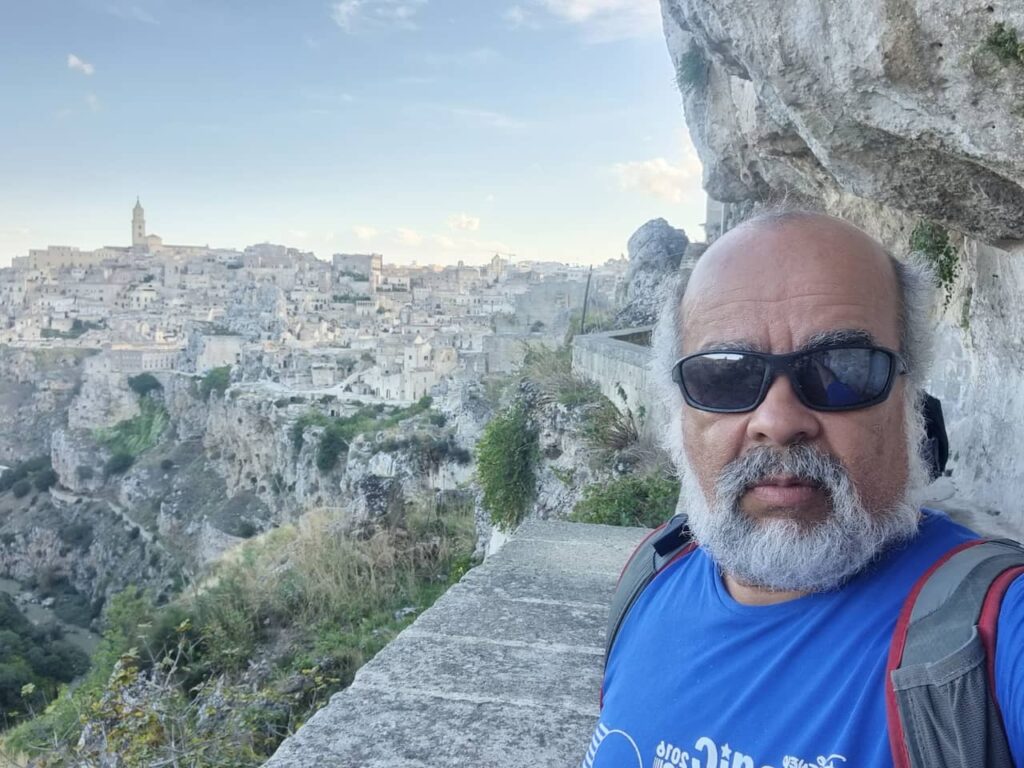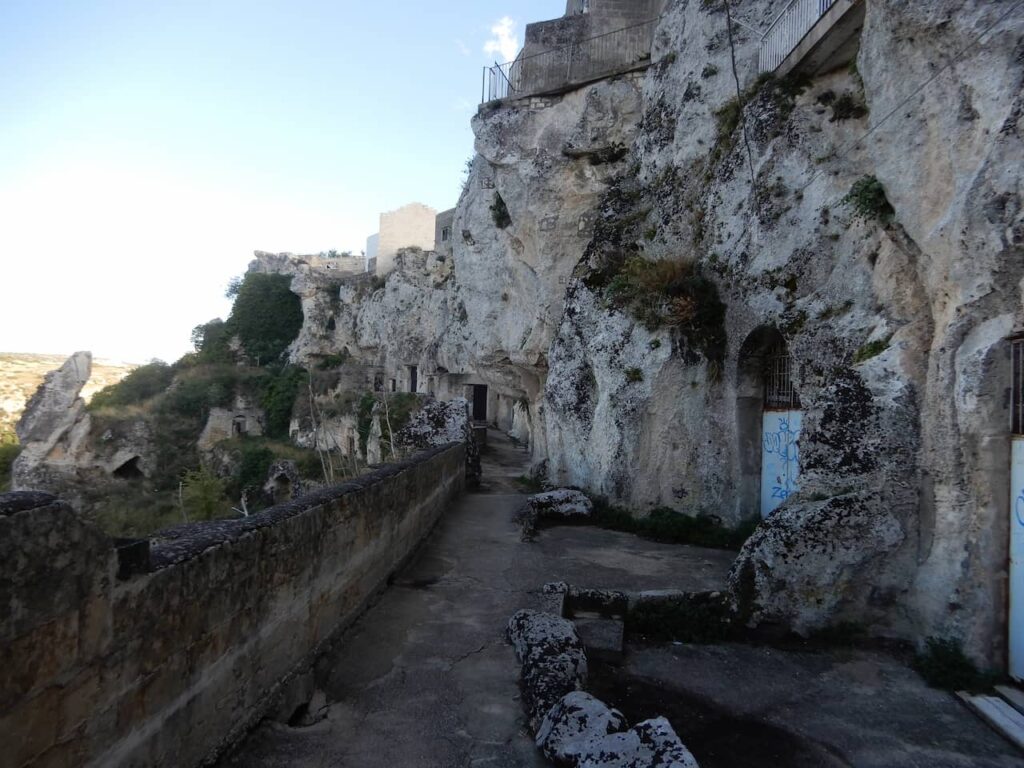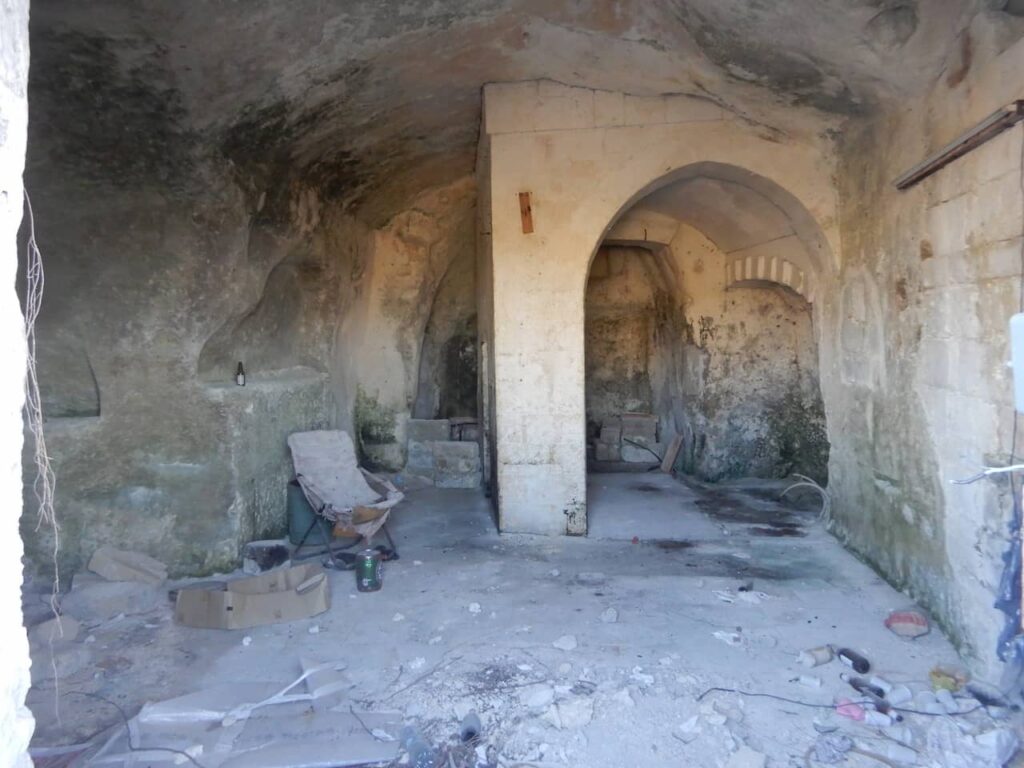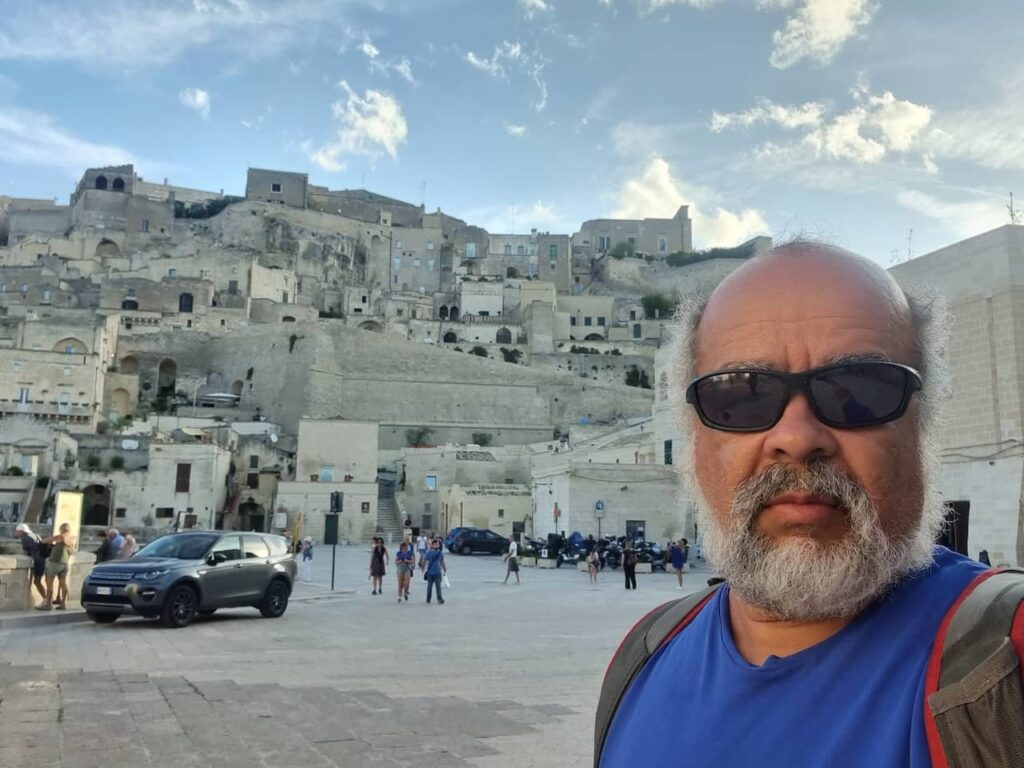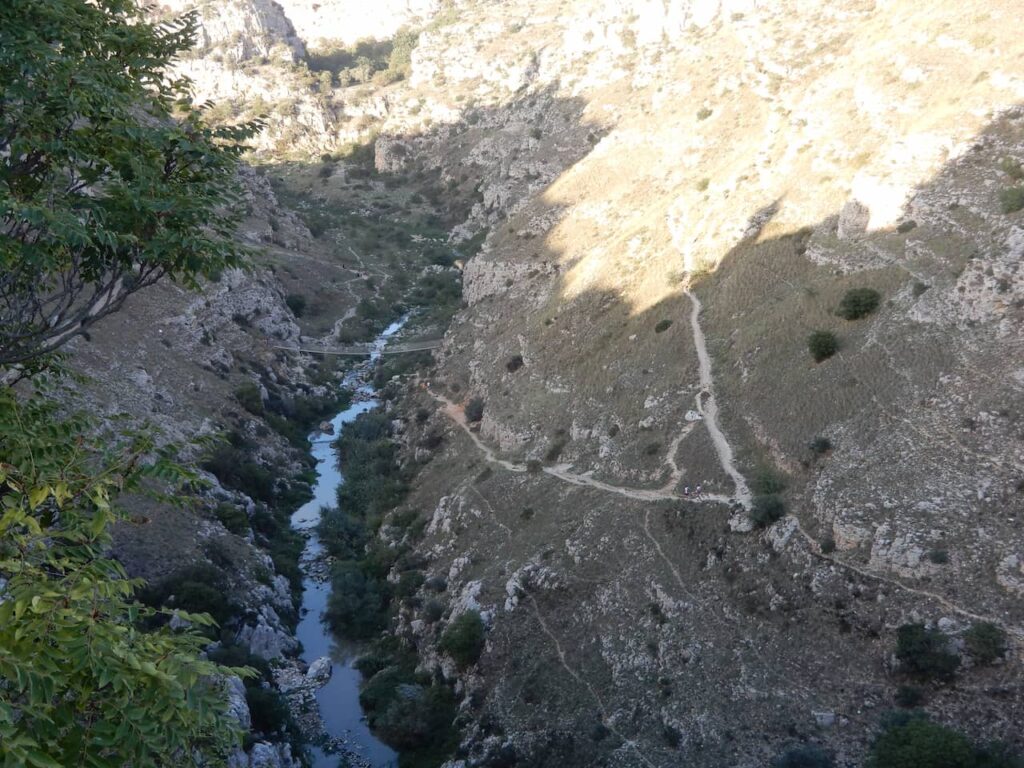Home » Destinations » Matera
Italy
Bari
After 11 hours on the boat and a peaceful night, we arrive in Bari at 8 am
Bari was a city. Roman, Byzantine and then Norman.
Today it is the capital of Puglia and an active port from where boats depart for Croatia and Greece.
The city is predominantly modern (since much of it was destroyed by earthquakes and wars), it has an old center, next to the sea and the Norman castle, some important and beautiful buildings and churches.
Its modern center is occupied by colorful buildings of classic architecture from the beginning of the 20th century.
Bari, for us it was just the arrival of the boat from Croatia, our goal is to go to Matera.
We stroll through the historic center and then continue our journey.
Milton told me about Alberobelo, which is close to Bari and we decided to stop by before heading to Matera.
If you want to know more about Bari see this article.
Alberobelo
The townhouses are really unique, they are called trulli.
There are several versions of the reason for the conical shape and the most accepted is that the locals built their houses this way to avoid the high housing rates imposed by the king,
With the roof made of interlocking stones and in a conical shape, it was easy for the residents to remove the stones when any government official came to collect the tax.
No roof, no home, and so they avoided paying. When the collector left, all he had to do was put the roof back together.
It really is a unique place and well worth the stop.
After lunch, we continue our journey to Matera.
Matera
Matera is known as the Sassi of Matera, considered the third oldest city in the world, it is all excavated in limestone and inhabited since the Paleolithic era. Until the 1950s, many people still lived in caves and the city was very poor and the inhabitants were starving.
The dwellings were dark, there was no natural light or ventilation, not even water and sewage.
Its residents were farmers and peasants, very poor and sick.
The government came up with a plan and removed the people from the caves to better places and reclaimed the place.
In 2019 the city was chosen as the Capital of Culture of Europe, which made the city enter the tourist circuit.
Also some movies were made there like The Passion of the Christ and, in 2017, Wonder Woman.
When we arrived we had no idea what the city was like. We only knew that it was considered the cultural capital of Europe and it was on our way.
It was a surprise to see the caves, the dwellings and the way people lived there.
Just being in place to understand the situation.
Unfortunately we didn’t have much time to stay, because the next day we have to go to Pompeii, but the city is worth a couple of days to better explore the trails and caves.

